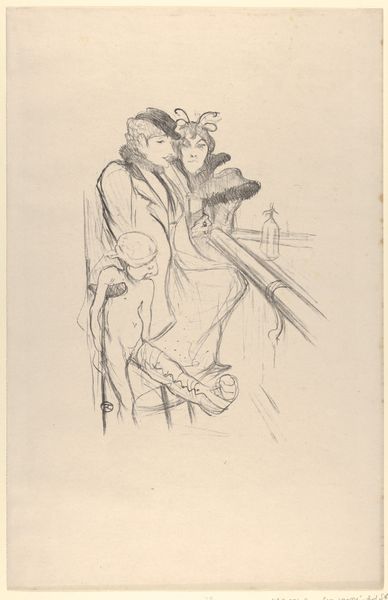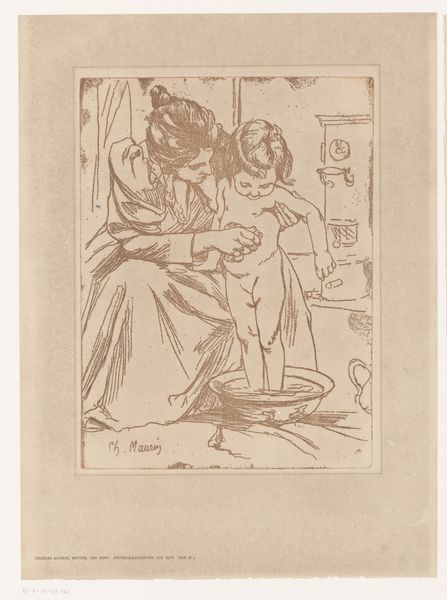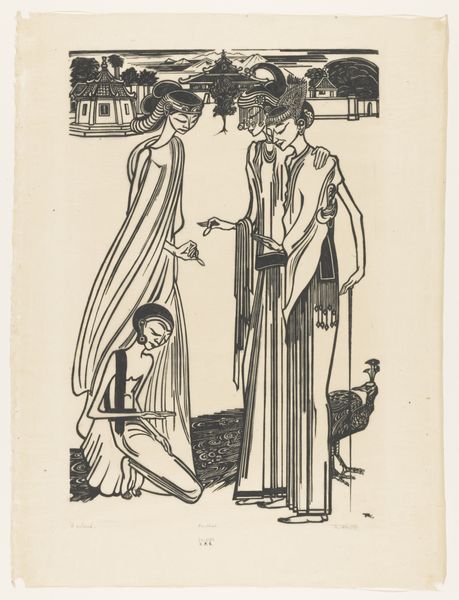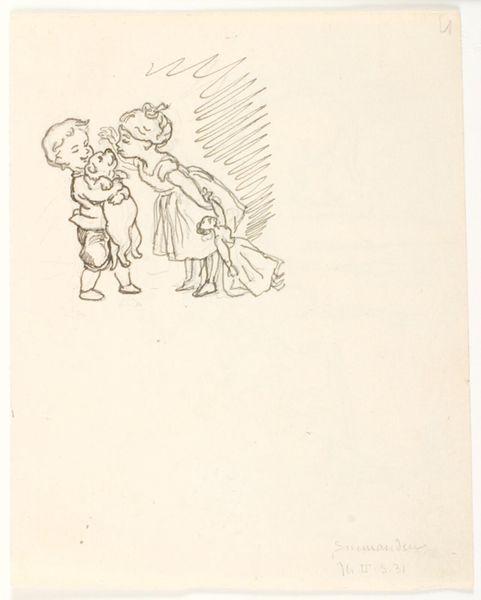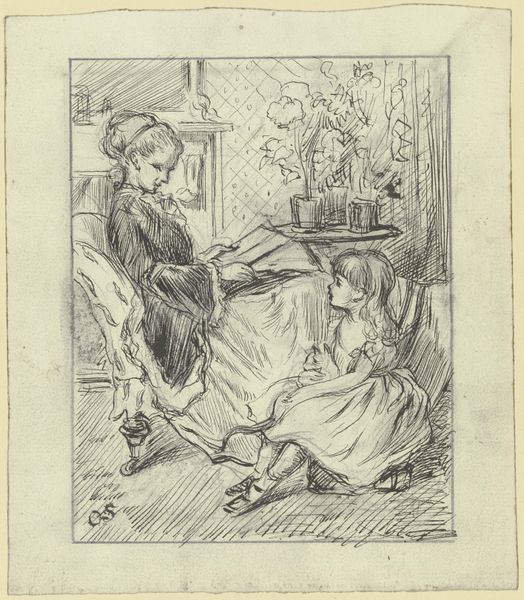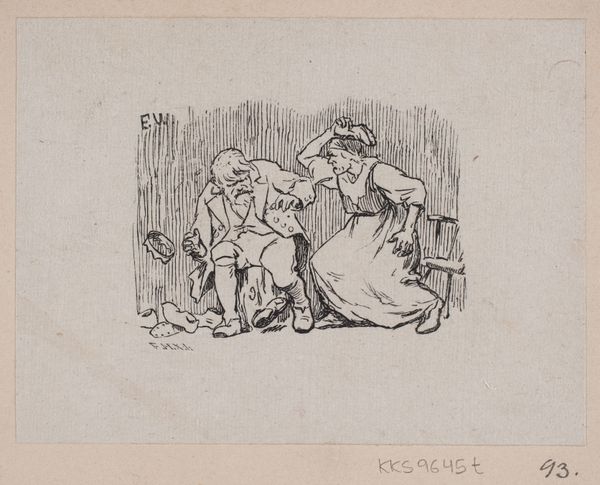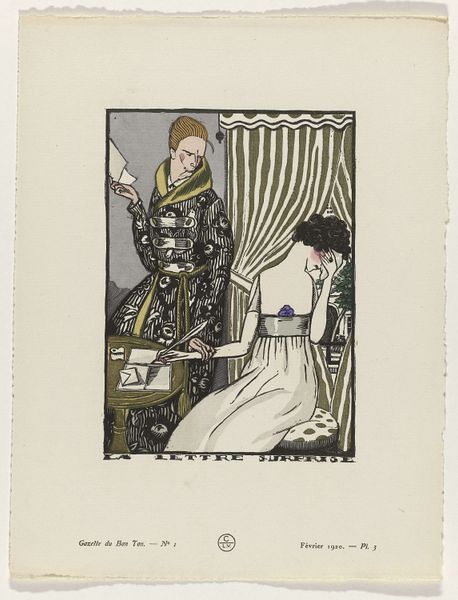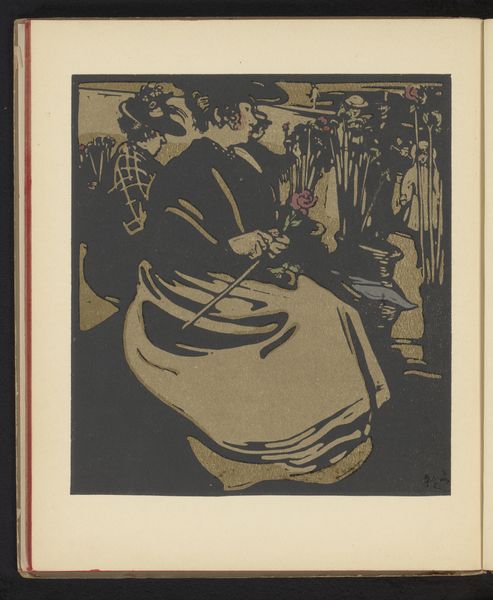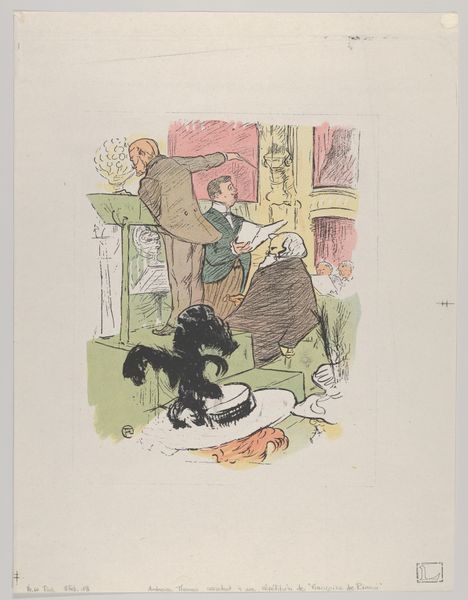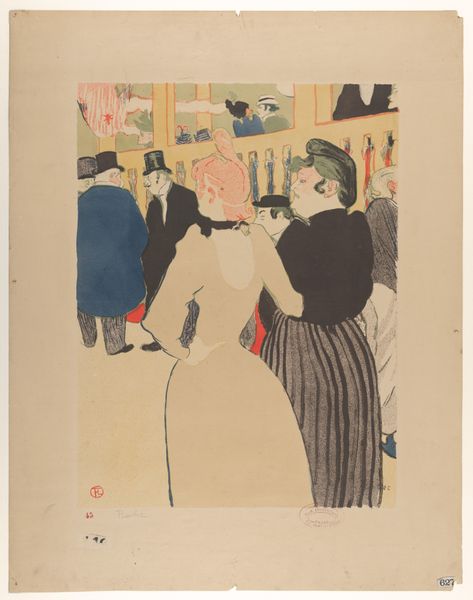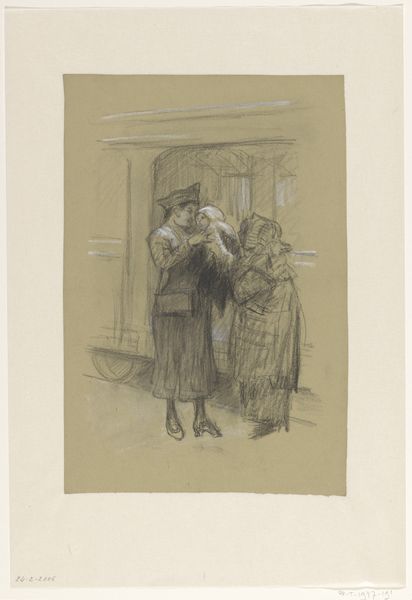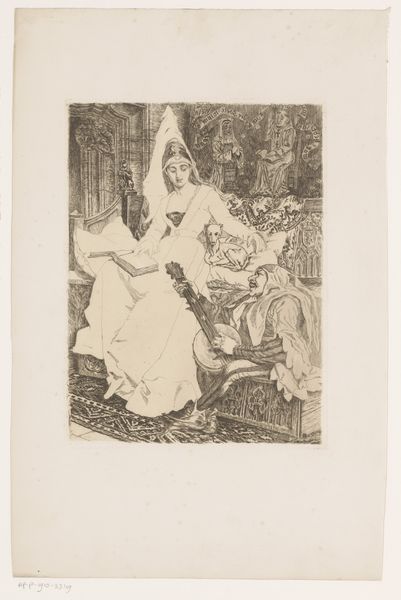
Dimensions: Image: 10 1/4 × 8 11/16 in. (26 × 22 cm) Sheet: 16 9/16 × 12 5/8 in. (42 × 32 cm)
Copyright: Public Domain
Curator: This is "Alors vous êtes sages," or "So, you are good," a lithograph by Henri de Toulouse-Lautrec, created in 1897. It resides here at the Metropolitan Museum of Art. What do you make of it? Editor: Immediately, the interplay of muted tones and the bold linearity create a very modern mood, even severe. There's a compositional tension, an imbalance… It’s oddly captivating. Curator: It captures a particular slice of Parisian life, doesn’t it? Toulouse-Lautrec often depicted performers, nightlife, but here we have two women in what seems like a more intimate, perhaps even domestic setting. Editor: The loose hatching defines their forms economically. Note how the rear figure's dress utilizes blue-green to produce texture. There's superb control on display to suggest depth, while using almost rudimentary elements. Curator: Absolutely, and this aesthetic resonated with the era's shift towards mass culture and print media. This was initially designed as a cover illustration, after all. Consider its potential reach through the illustrated press and it’s commenting on female roles. Editor: But is it truly "commenting," or merely reflecting? We need to look closely. Consider the flattened perspective pushing the foreground up while minimizing background information. Aren't these primarily visual strategies—pure form? Curator: The title, “So, you are good,” is, I think, decidedly loaded in meaning. We are positioned to wonder *are* they good? In whose eyes? Is it sarcasm about women having a good reputation? Or is the lithograph hinting that beneath the veneer of middle-class life, there is far more? Editor: It teases, yes, but is the question truly answered? Does it offer conclusive answers? Ultimately the lines lead the eyes, constructing the forms through sheer artistry in simplification. What are left behind? Curator: So while we disagree slightly on authorial intent, there’s common ground in seeing it both as an exquisite piece of formal construction and an encapsulation of the complicated roles women played, and were seen to play, in turn-of-the-century Paris. Editor: Agreed. An intriguing and visually commanding print!
Comments
No comments
Be the first to comment and join the conversation on the ultimate creative platform.
